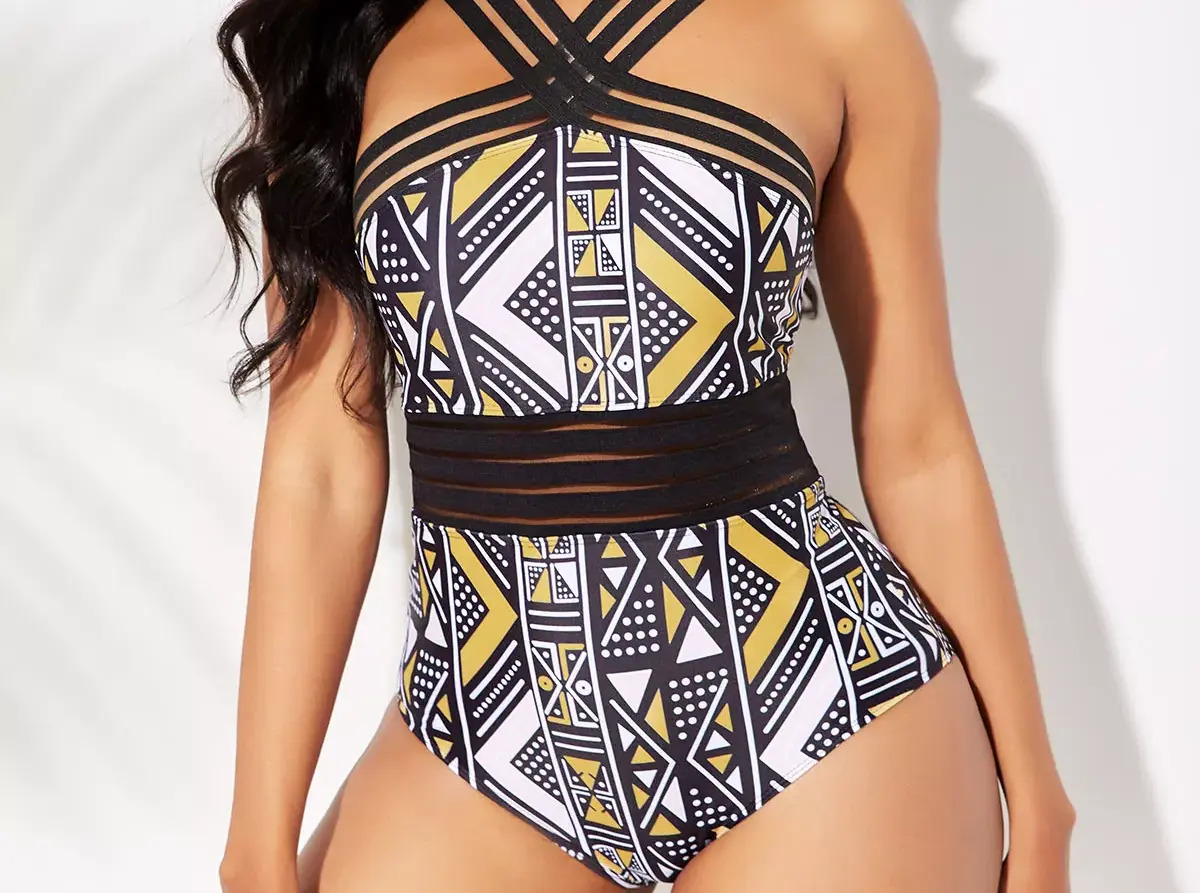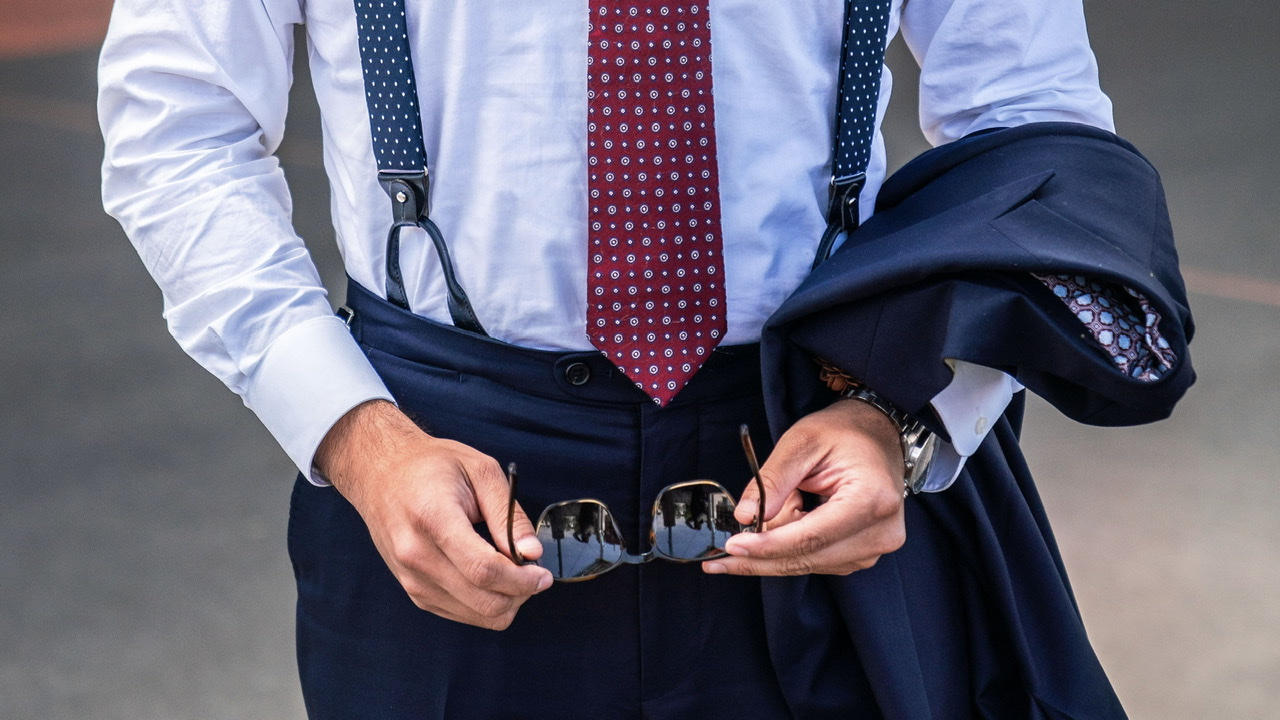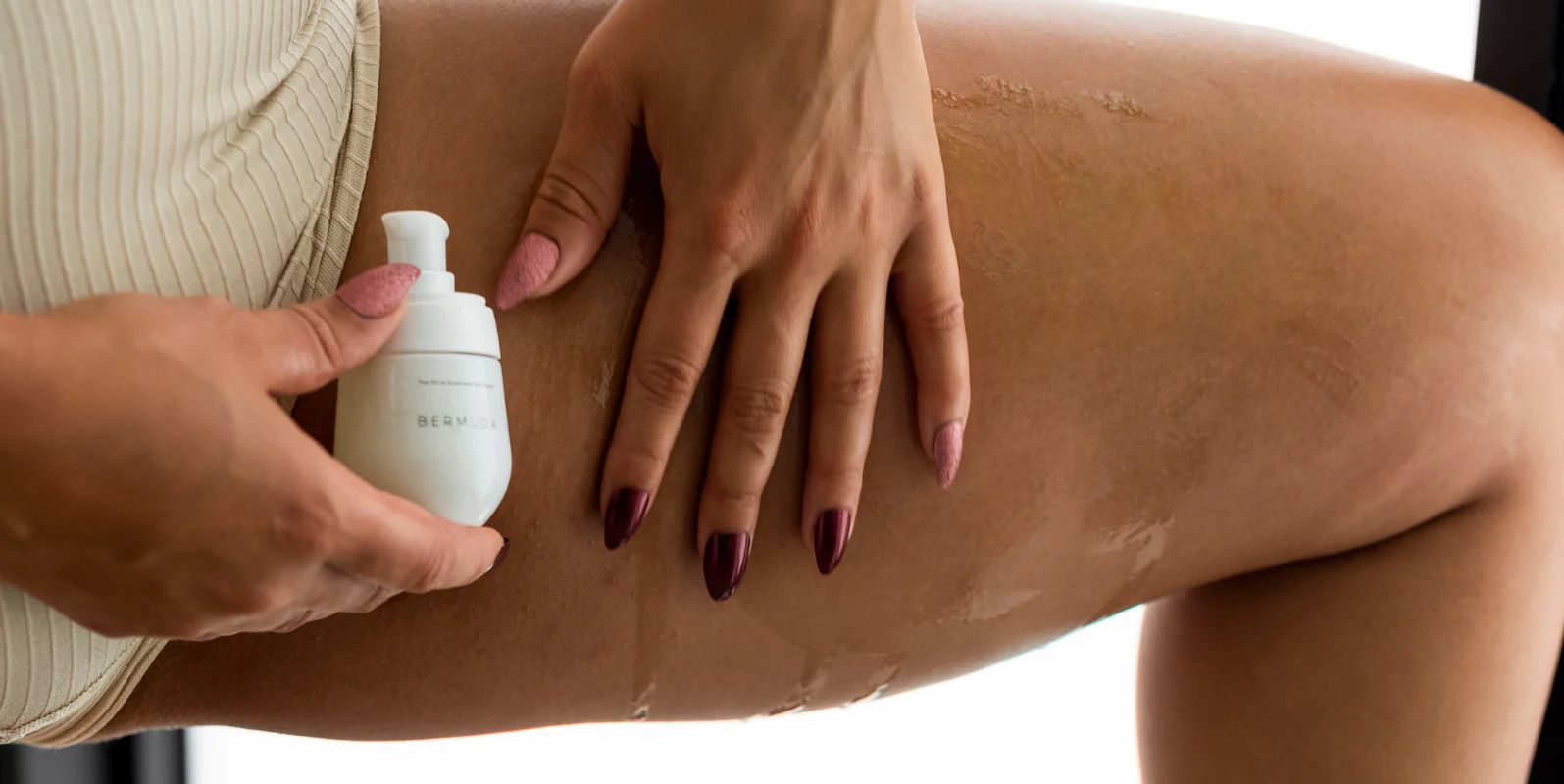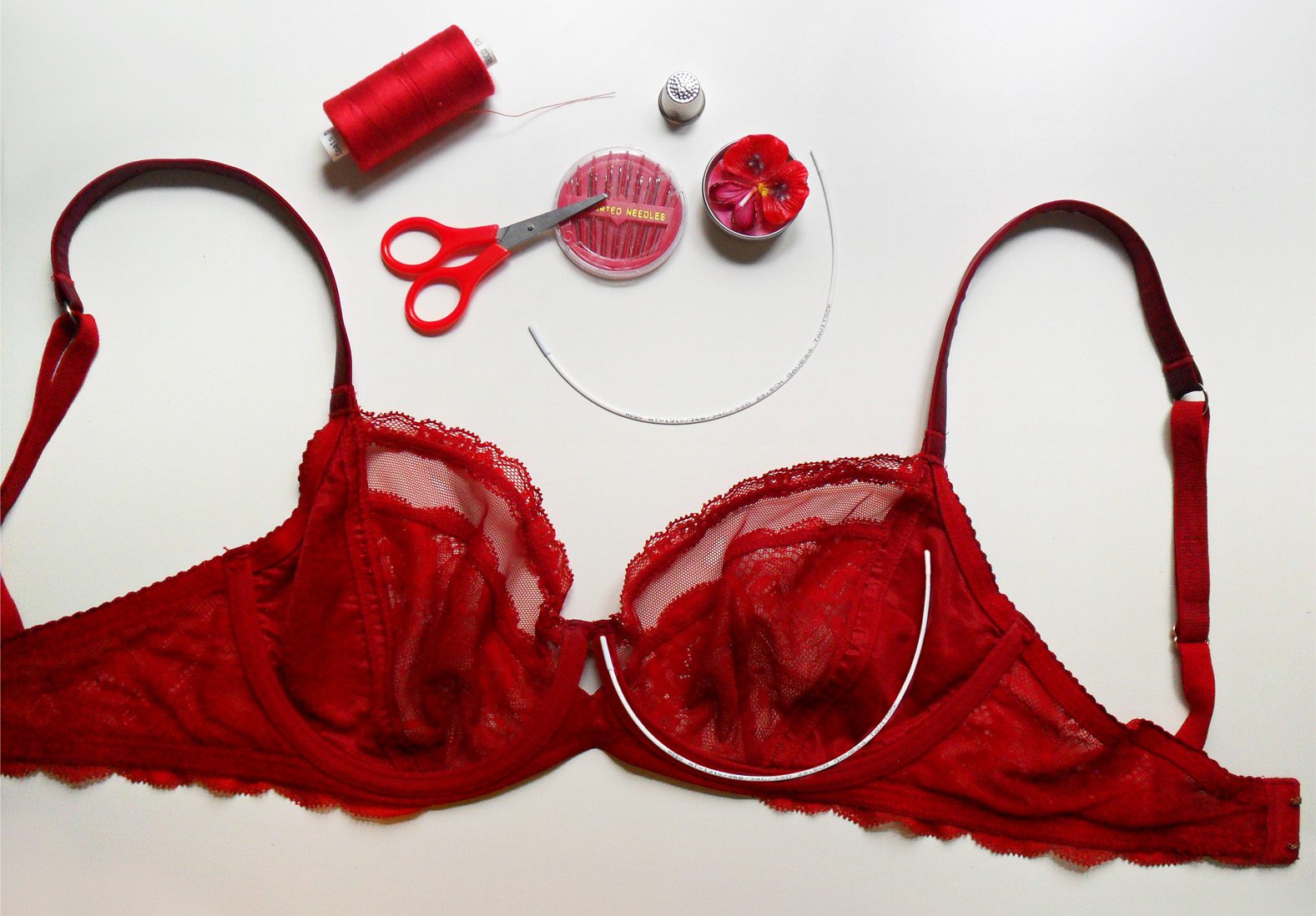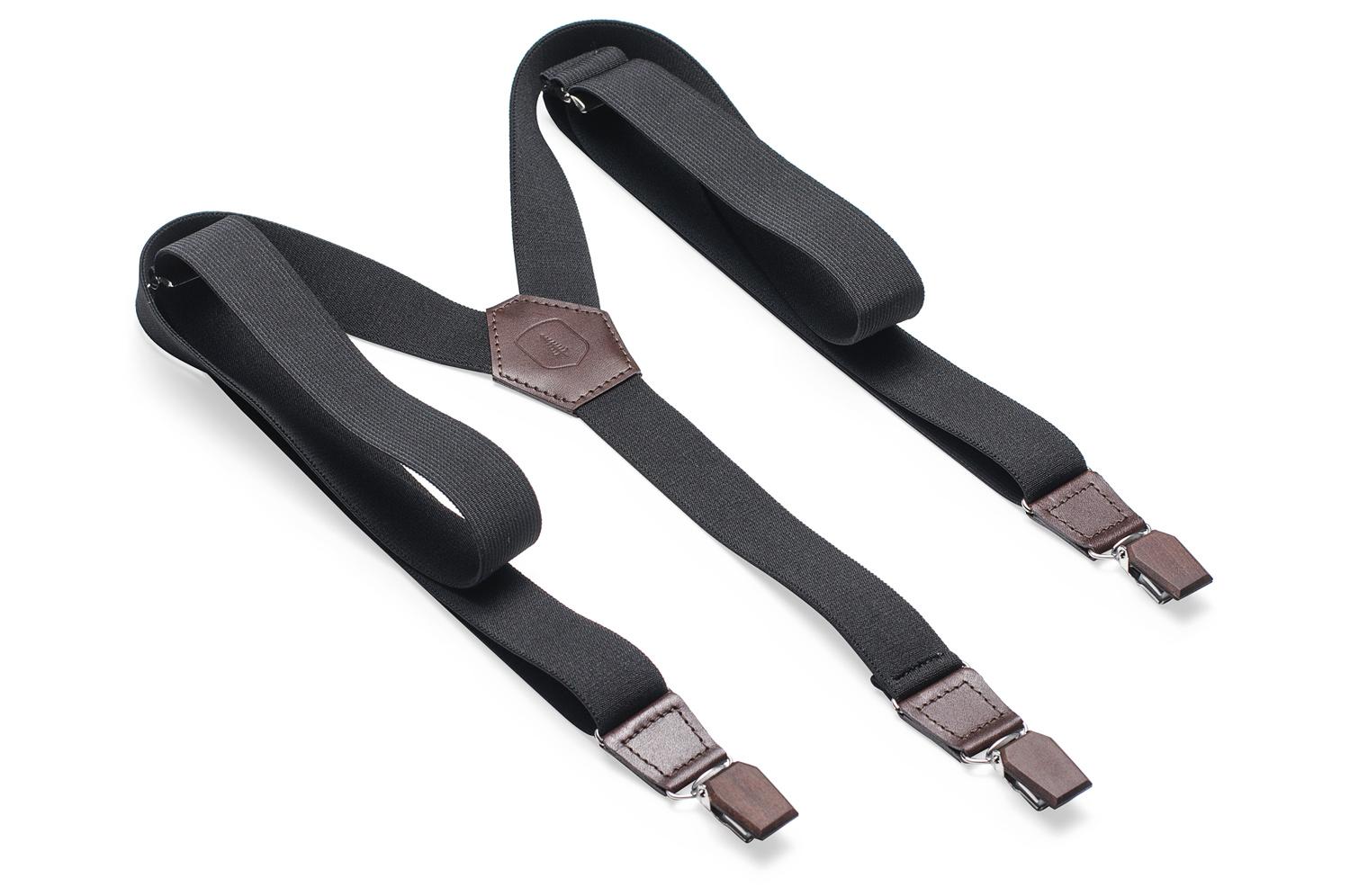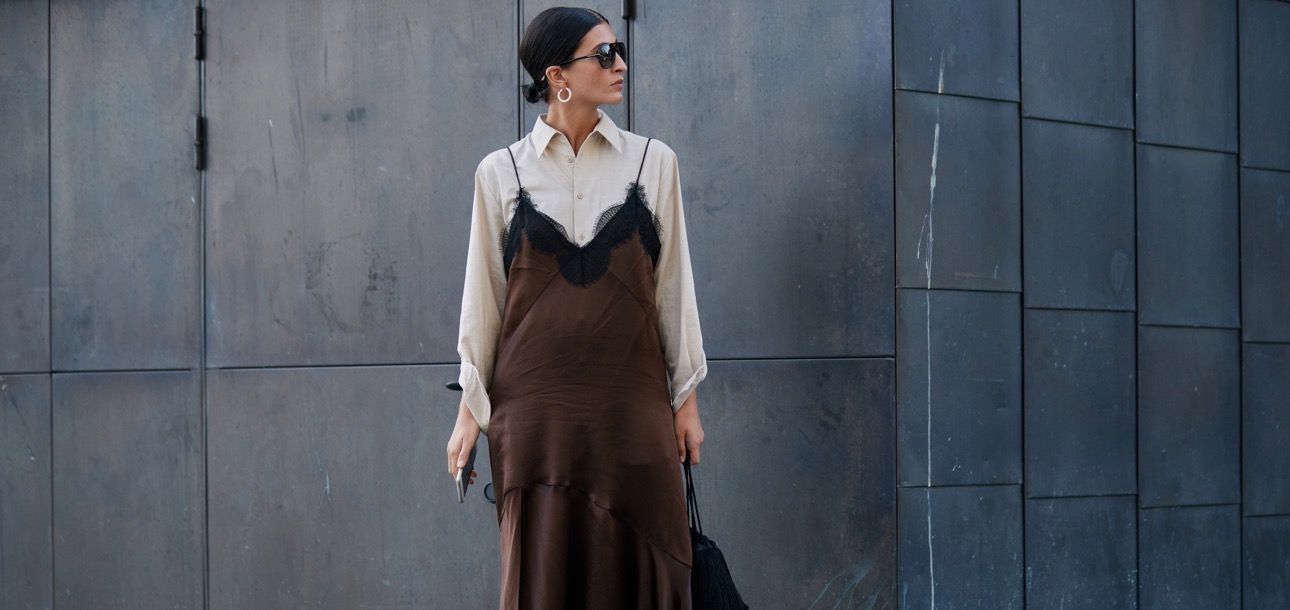Home>How-to Guides>For All>How To Keep Suspenders From Slipping
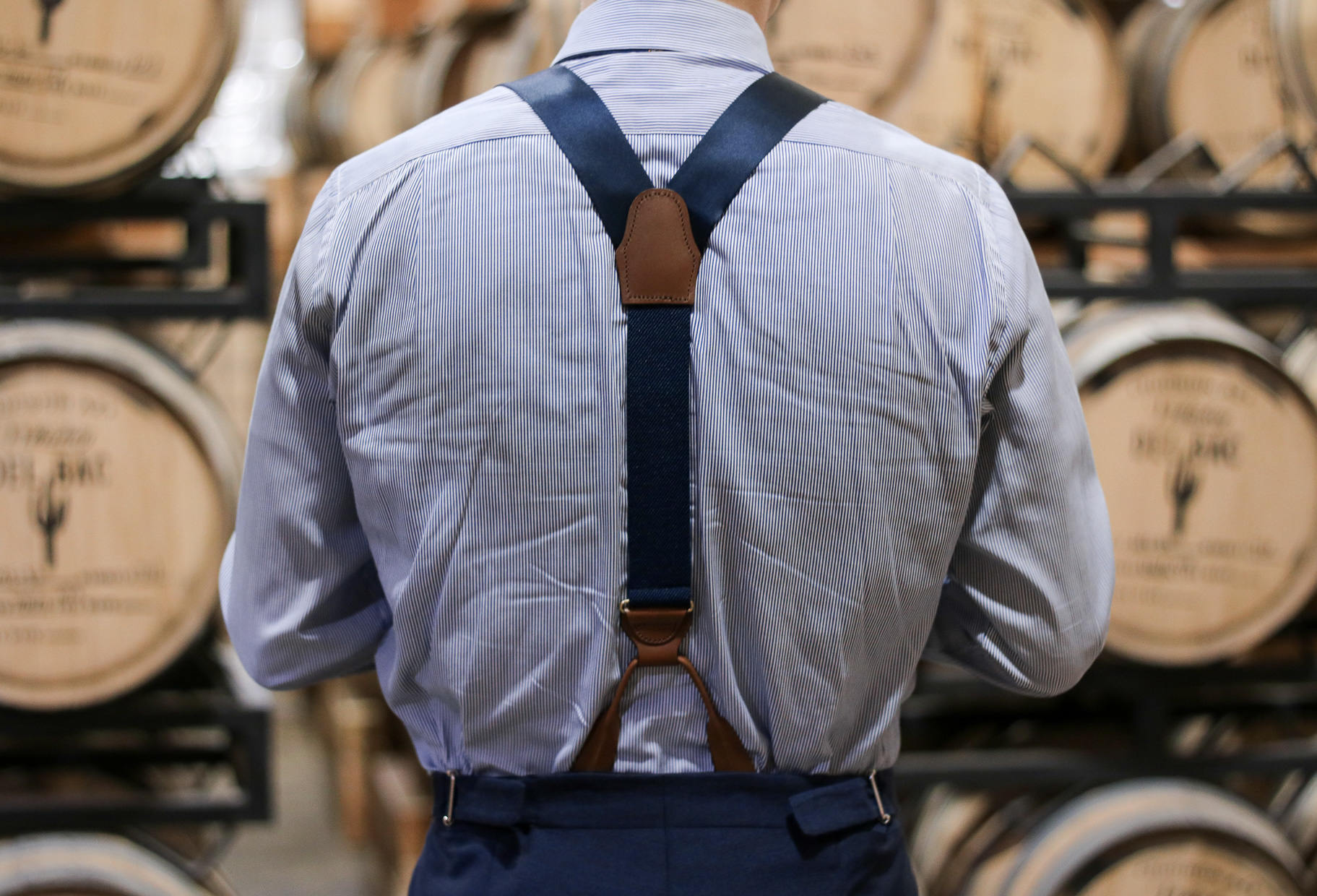

For All
How To Keep Suspenders From Slipping
Modified: July 30, 2023
Learn the best tricks and tips for keeping suspenders from slipping with this comprehensive guide. Perfect for all suspender wearers.
(Many of the links in this article redirect to a specific reviewed product. Your purchase of these products through affiliate links helps to generate commission for Under-tec.com, at no extra cost. Learn more)
Table of Contents
Introduction
Are you tired of constantly readjusting your suspenders throughout the day? Suspenders slipping can be frustrating and inconvenient, but fear not – there are ways to keep them securely in place. In this article, we will explore various techniques and tips to help you prevent suspenders from slipping.
Suspenders, also known as braces, are a classic accessory that not only add style to your outfit but also provide functional support to keep your pants up. However, it is common for suspenders to slide down and lose their grip, causing discomfort and a less polished appearance.
Understanding the reasons behind suspenders slipping is essential to address the issue effectively. Factors such as incorrect sizing, improper attachment, or inadequate tension can contribute to this problem. But don’t worry – we will guide you through the solutions step by step so that you can enjoy the benefits of wearing suspenders without any hassle.
This article will cover different types of suspenders, tips for choosing the right size and style, methods of adjusting the length, correct attachment techniques, and inventive solutions, such as using gripper clips or sewing on suspender buttons. We will also address the unique challenge of wearing suspenders with belt loops, as well as provide tips on maintaining proper tension throughout the day.
By the end of this article, you will have a comprehensive understanding of how to keep your suspenders from slipping, allowing you to confidently wear this stylish accessory without any interruptions or frustration.
Understanding Suspenders Slipping
Suspenders slipping can be a common issue that many people face. It refers to the situation when your suspenders gradually slide down your shoulders, causing discomfort and an unkempt appearance. Understanding why suspenders slip is crucial in finding the right solutions to keep them in place.
One of the primary reasons for suspenders slipping is incorrect sizing. If your suspenders are too loose or too tight, they will not be able to provide the necessary support and will gradually slide down. It is essential to pick suspenders that are the right length for your torso and have enough tension to hold your pants up without being too restrictive.
Another factor that contributes to suspenders slipping is improper attachment. If the suspenders are not securely fastened to your pants, they are more likely to slide down. Depending on the type of suspenders you have, there are different attachment methods, such as using clips or buttons. It is important to ensure that these attachments are strong and well-fitted to prevent slipping.
Inadequate tension in the suspenders can also cause them to slip. If the suspenders are too loose, they won’t be able to hold your pants in place effectively. On the other hand, if they are too tight, they can create discomfort and may still slip due to excess strain on the attachments. Finding the right balance of tension is essential for preventing slippage.
It is worth noting that the material of the suspenders can also play a role in their slip resistance. Suspenders made from materials with less grip, such as silk or satin, may be more prone to slipping compared to those made from elastic or grippier fabric. Considering the material when purchasing suspenders can help minimize the possibility of slippage.
Understanding the reasons behind suspenders slipping is the first step in ensuring that you can keep them securely in place. By addressing sizing issues, using proper attachment methods, adjusting tension, and considering the material of your suspenders, you will be able to find effective solutions to prevent slippage and enjoy the benefits of wearing suspenders without interruption or frustration.
Types of Suspenders
When it comes to suspenders, there are various types available, each offering a unique style and functionality. Understanding the different types can help you choose the right suspenders to suit your preferences and needs. Here are some common types of suspenders:
- Button-on Suspenders: These suspenders feature buttons that are sewn onto the waistband of your pants. They are the traditional style of suspenders and provide a secure and elegant look. Button-on suspenders, as the name suggests, attach to the buttons using buttons sewn onto the suspenders themselves.
- Clip-on Suspenders: Clip-on suspenders, also known as clasp or grip suspenders, are the most popular and versatile type. They feature metal or plastic clips that grip onto the waistband of your pants. Clip-on suspenders offer quick and easy attachment, making them convenient for everyday wear.
- Convertible Suspenders: Convertible suspenders give you the option to switch between button-on and clip-on styles. They typically come with removable clips, allowing you to attach them to either buttons or waistbands. This versatility makes them a great choice if you want the flexibility to wear different types of suspenders.
- X-Back Suspenders: X-back suspenders feature an X-shaped design on the back, where the suspenders meet. This design offers more support and stability by evenly distributing the tension across your shoulders. X-back suspenders are commonly seen in formal attire and provide a sophisticated look.
- Y-Back Suspenders: Y-back suspenders have a Y-shaped design on the back, with a single attachment point in the middle. They offer a sleek and streamlined appearance and are often preferred for their simplicity and versatility. Y-back suspenders are commonly worn with both formal and casual outfits.
- Belt Suspenders: Belt suspenders, also known as side-clip suspenders, combine the functionality of suspenders with the appearance of a belt. They have clips or clasps on the sides that attach to loops on the waistband of your pants. Belt suspenders provide the convenience of a clip-on style while giving the illusion of a belt.
These are just a few examples of the many suspenders available in the market. When choosing suspenders, consider the style, functionality, and personal preference to find the perfect pair that suits your needs. Whether you opt for button-on, clip-on, convertible, X-back, Y-back, or belt suspenders, each type has its own unique charm and can enhance your outfit with a touch of sophistication.
Choosing the Right Size and Style
Choosing the right size and style of suspenders is essential for both comfort and functionality. Here are some tips to help you find the perfect fit:
1. Consider Your Height and Body Type: Suspenders come in various lengths, so it’s important to choose a size that corresponds to your height and body type. Taller individuals may require longer suspenders to ensure proper coverage, while shorter individuals may find shorter suspenders more suitable.
2. Check the Adjustability: Look for suspenders that offer adjustable straps. This feature allows you to customize the length and tension to achieve the perfect fit. Adjustable suspenders ensure that they stay securely in place throughout the day.
3. Assess the Width: Suspenders come in different widths, ranging from narrow to wide. The width you choose depends on your personal style and the occasion. Wider suspenders provide a bolder look and are often preferred for formal events, while narrower suspenders are more versatile and suitable for both casual and formal wear.
4. Consider the Material: Suspenders are made from various materials, including elastic, fabric, or leather. Elastic suspenders offer flexibility and stretchiness, ensuring a comfortable fit. Fabric and leather suspenders provide a more rustic and sophisticated look. Consider the material that aligns with your style and comfort preferences.
5. Think about Style and Occasion: Suspenders come in a range of styles and patterns, from solid colors to stripes or novelty designs. Select the style that complements your outfit and the occasion you are dressing for. Classic solid colors are versatile and can be worn with a variety of outfits, while patterns and novelty designs can add a fun and quirky touch.
6. Personalize with Hardware: Pay attention to the hardware, such as clips or buttons, used for attachment. Ensure that they are sturdy and reliable to prevent slipping. Additionally, some suspenders offer the option to customize the hardware, allowing you to add a personal touch to your accessory.
7. Try Before You Buy: If possible, try on different suspenders to assess the fit and comfort before making a purchase. This will help you determine the size, style, and material that suit you best.
By considering these factors, you can choose suspenders that not only fit well but also align with your personal style. Whether you opt for adjustable straps, a specific width or material, or a unique design, finding the right size and style of suspenders enhances your overall look and ensures a comfortable and secure fit.
Adjusting the Length
Properly adjusting the length of your suspenders is crucial for both comfort and functionality. Here are some steps to help you adjust the length of your suspenders:
1. Put on Your Pants: Start by putting on the pants that you plan to wear with your suspenders. This will give you an accurate idea of how the suspenders will fit with your outfit.
2. Attach the Suspenders: Attach the suspenders to the buttons or clips on the waistband of your pants. Make sure they are securely fastened to prevent them from coming loose throughout the day.
3. Assess the Length: Stand in front of a mirror and evaluate the length of the suspenders. Ideally, they should form a straight line from the attachment point at the front to the attachment point at the back.
4. Adjust the Length: Depending on the style of your suspenders, you can usually adjust the length by either sliding the adjuster or pulling on the strap. Shorten or lengthen the suspenders until they fit comfortably on your shoulders without feeling too tight or too loose.
5. Check the Tension: Once you have adjusted the length, check the tension of the suspenders. They should provide enough support to keep your pants up without pulling too tightly on your shoulders. Adjust the tension as needed to achieve a comfortable fit.
6. Test the Fit: Move around and try different movements to ensure that the suspenders stay in place and do not slip. If you notice any slippage or discomfort, readjust the length or tension accordingly.
7. Fine-Tune if Needed: If your suspenders have adjustable straps with multiple holes, you can fine-tune the length by choosing a different hole. This allows for further customization and ensures the best possible fit.
It’s important to remember that everyone’s body shape and preferences may differ, so take the time to adjust the suspenders to your liking. The more accurately you adjust the length, the better the suspenders will fit and function throughout the day.
By following these steps, you can easily adjust the length of your suspenders to achieve a comfortable and secure fit. Taking the time to find the right length ensures that your suspenders stay in place and provide the desired support, allowing you to confidently wear them without any slipping or discomfort.
Attaching Suspenders Correctly
Properly attaching your suspenders is crucial to ensure they stay securely in place throughout the day. Here are some steps to help you attach your suspenders correctly:
1. Button Attachment: If you have button-on suspenders, start by locating the buttons on the waistband of your pants. The buttons are typically located on the inside of the waistband or in the button strip. Attach the suspender buttons to the corresponding buttons on the pants, making sure they are securely fastened.
2. Clip Attachment: For clip-on suspenders, open the clips by pressing down on the lever. Slide the back side of the clip under the waistband at the back of your pants, near the center. Make sure the clip is securely attached and will not easily come undone. Repeat the process for the front clips, attaching them to the front waistband.
3. Positioning: Stand in front of a mirror and adjust the position of the suspenders on your shoulders. They should lay flat against your body and align with the seams of your shirt. Adjust the length and tension of the suspenders if needed to achieve a comfortable fit.
4. Check for Slippage: Once the suspenders are attached and positioned, perform a few movements to check for any slippage or discomfort. If you notice any issues, readjust the attachment or tension to ensure a secure fit.
5. Shirt Tuck: To ensure the suspenders stay hidden and in place, consider tucking your shirt into your pants. This helps prevent the shirt from riding up and interfering with the suspenders.
6. Optional: Shirt Stays or Suspenders with Shirt Attachment: If you prefer a more secure attachment, you can use shirt stays or opt for suspenders that come with loops or clips designed to attach to the shirt. These options help keep the shirt in place, reducing the chances of the suspenders slipping.
Remember, proper attachment is crucial to keep your suspenders secure and avoid any discomfort or interruptions throughout the day. Whether you’re using button-on or clip-on suspenders, ensure that they are correctly attached and positioned on your shoulders. Taking the time to attach the suspenders correctly ensures that they will stay in place and provide the desired support, allowing you to confidently wear them without any slipping or adjustments.
Using Gripper Clips
Gripper clips are a practical and effective accessory for preventing suspenders from slipping. These specialized clips provide extra grip on the waistband of your pants, keeping the suspenders securely in place. Here’s how to use gripper clips:
1. Attach the Gripper Clips: Start by attaching the gripper clips to the ends of your suspenders. These clips usually have teeth or rubberized grips that help them grip onto the fabric of your pants.
2. Position the Gripper Clips: Put on your pants and position the gripper clips on the waistband. Place them towards the sides of your hips, slightly forward from the center. This positioning helps distribute the tension evenly and provides stability.
3. Open the Gripper Clips: Open the gripper clips by pressing or sliding the lever or release mechanism. This action will spread the clips apart, allowing you to attach them securely to the fabric of your pants.
4. Attach the Gripper Clips: With the gripper clips open, position them under the waistband fabric and then release the lever or slide the release mechanism. This action will close the clips, gripping onto the fabric tightly.
5. Adjust the Tension: Check the tension of the suspenders after attaching the gripper clips. You want the suspenders to provide enough support to hold your pants up comfortably without pulling too tightly. Adjust the tension by either lengthening or shortening the suspenders or by adjusting the gripper clip placement.
6. Test the Grip: Move around and perform some activities to test the grip of the gripper clips. Bend over, sit, and walk to ensure that the suspenders stay securely in place. If you notice any slipping or discomfort, readjust the tension or gripper clip placement as needed.
Gripper clips are especially useful for individuals who prefer clip-on suspenders or have pants without button attachments. They offer a reliable solution to keep suspenders from slipping, providing both comfort and stability throughout the day.
It’s important to note that not all suspenders come with gripper clips included, but they can be purchased separately and added to your existing suspenders. Additionally, some suspenders already have built-in gripper clips as part of their design.
By using gripper clips, you can enhance the grip and stability of your suspenders, preventing them from slipping and ensuring a comfortable fit. Experiment with different tension levels and gripper clip placements to find the best configuration that works for you.
Sewing on Suspender Buttons
Sewing suspender buttons onto your pants is a traditional and secure method of attaching suspenders. This method ensures a strong connection between the suspenders and the pants, preventing them from slipping. Here’s how to sew on suspender buttons:
1. Determine the Button Placement: Decide where you want the buttons to be positioned on your pants. Typically, they are placed along the waistband, about 1 to 1.5 inches on either side of the center button or the front belt loop.
2. Gather the Necessary Tools: Get a needle suitable for sewing through fabric and a thread that matches the color of your pants. Make sure the thread is strong and sturdy to withstand the tension applied to the suspenders.
3. Thread the Needle: Thread the needle with enough thread, leaving a long tail for tying knots later. Make sure the thread is securely attached to the needle, and tie a knot at the other end to prevent it from slipping through the fabric.
4. Position the Button: Place the button on the outside of the waistband, aligning it with the desired placement. Make sure the button is centered and straight. Hold the button in place with your fingers to keep it from moving while sewing.
5. Sew the Button: Insert the needle from the backside of the fabric through one of the buttonholes. Pull the thread all the way through until the knot catches on the inside of the waistband. Then, insert the needle back through the opposite buttonhole, creating an X-shaped stitch on the backside of the fabric. Repeat this process several times to ensure a secure attachment.
6. Tie Off the Thread: After sewing the button on, tie a secure knot on the backside of the fabric. You can create a double or triple knot to ensure it stays in place. Trim any excess thread, making sure not to cut the knots.
7. Repeat for Multiple Buttons: If you are attaching multiple buttons, repeat the process for each button, ensuring they are evenly spaced along the waistband.
By sewing suspender buttons onto your pants, you create a reliable attachment point for your suspenders. This method provides a secure and traditional way to keep your suspenders in place throughout the day.
If you are not confident in sewing the buttons yourself, you can also take your pants to a professional tailor or a seamstress. They will be able to sew on the buttons for you, ensuring a neat and sturdy attachment.
Remember, sewing on suspender buttons is a permanent alteration to your pants, so choose the placement carefully. With this method, you can enjoy the classic look and functionality of suspenders without worrying about them slipping or coming loose.
Using Suspenders with Belt Loops
Using suspenders with pants that have belt loops may seem challenging, but with the right techniques, it’s still possible to keep your suspenders securely in place. Here’s how to use suspenders with belt loops:
1. Choose the Right Suspenders: Look for suspenders that come with grips or clips specifically designed to attach to belt loops. These suspenders usually have small, narrow clips that can easily attach to the loops.
2. Attach the Suspenders: Put on your pants and attach the suspenders to the belt loops. Insert the clips or grips through the loops, ensuring they are securely fastened. Make sure the suspenders are evenly attached to both sides of the pants.
3. Adjust the Tension: Adjust the tension of the suspenders by either lengthening or shortening them. You want them to provide enough support to hold your pants up comfortably without pulling too tightly on the belt loops.
4. Position the Belt: If desired, you can still wear a belt with your suspenders. Position the belt over the suspenders, making sure it covers the clips or grips. This helps create a seamless and polished look.
5. Test for Stability: Move around and perform different activities to test the stability of the suspenders. Ensure that they stay securely attached to the belt loops without any slipping or discomfort.
6. Adjust as Needed: If you notice any slipping or discomfort, readjust the tension or attachment of the suspenders. Experiment with different positions and lengths to find the most secure and comfortable fit.
Using suspenders with belt loops requires suspenders specifically designed for this purpose. These suspenders typically have smaller clips or grips that can easily attach to the loops without damaging your pants.
It’s important to note that using suspenders with belt loops may alter the function or appearance of the belt loops. If you prefer to wear a belt without suspenders, simply remove the suspenders and use the belt as usual.
By using suspenders with belt loops, you can enjoy the comfort and style of suspenders even with pants that have belt loops. This allows you to confidently wear suspenders while keeping your pants securely in place throughout the day.
Maintaining Proper Tension
Maintaining proper tension in your suspenders is essential to ensure they stay securely in place while providing optimal comfort. Here are some tips to help you maintain the right tension throughout the day:
1. Regularly Adjust the Tension: Be mindful of the tension in your suspenders and regularly adjust them as needed. Suspenders can gradually stretch or loosen over time, so it’s important to check the tension periodically and make necessary adjustments to keep them fitting snugly.
2. Avoid Over-Tightening: While it’s important to have sufficient tension to keep your pants up, avoid over-tightening the suspenders. Excessive tension can cause discomfort and potentially damage the suspenders or the attachment points on your pants.
3. Take Into Account Your Clothing Layers: Adjust the tension of your suspenders based on the number of layers you are wearing. If you’re wearing thicker clothing layers, you may need to loosen the suspenders slightly to accommodate the added bulk. Conversely, if you’re wearing lighter clothing, consider tightening the suspenders to maintain stable support.
4. Pay Attention to Body Movement: Observe how your body moves throughout the day and how the suspenders respond. If you notice that the suspenders slip or become too loose during certain activities, adjust their length or tension accordingly to maintain a secure fit.
5. Monitor Your Comfort Level: The tension of the suspenders should feel comfortably snug without digging into your shoulders or restricting your movement. If you start to experience discomfort or pain, it’s a sign that the tension is too tight. Loosen the suspenders slightly to alleviate any discomfort.
6. Adjust According to Activity Level: Consider adjusting the tension based on your level of physical activity. If you anticipate engaging in more active movements, such as walking briskly or bending frequently, it’s advisable to slightly tighten the suspenders to ensure they stay in place.
7. Check for Slippage: Regularly check for any slippage or movement of the suspenders throughout the day. If you notice any slipping, readjust the tension or attachment points to improve the stability of the suspenders.
Remember, maintaining proper tension in your suspenders is essential for both functionality and comfort. By regularly checking and adjusting the tension as needed, you can ensure that your suspenders stay securely in place while providing the necessary support to keep your pants up.
Keep in mind that the specific tension required may vary depending on your body type, the type of suspenders you are wearing, and your personal comfort preferences. Experiment with different tension levels to find the sweet spot that works best for you.
Conclusion
Keeping suspenders from slipping is a common challenge, but with the right techniques, you can enjoy the comfort and style of this classic accessory without any interruptions. By understanding the reasons behind suspenders slipping and implementing the appropriate solutions, you can ensure that your suspenders stay securely in place throughout the day.
We explored various aspects of using suspenders, including understanding why suspenders slip, the different types of suspenders available, choosing the right size and style, adjusting the length, attaching suspenders correctly, using gripper clips, sewing on suspender buttons, using suspenders with belt loops, and maintaining proper tension.
Remember to choose suspenders that fit you well and align with your personal style. Adjust the length and tension to achieve a comfortable and secure fit. Properly attach the suspenders to your pants using buttons, clips, or gripper clips, depending on the type of suspenders you have. Consider sewing on suspender buttons if you prefer a traditional and secure attachment method. If your pants have belt loops, use suspenders specifically designed for belt loop attachment or opt for suspender grips that can attach to the loops.
Regularly check and adjust the tension of your suspenders to maintain a secure fit and optimal comfort. Be mindful of your body movement and clothing layers, and make necessary adjustments accordingly. Ensuring proper tension and attachment will prevent your suspenders from slipping, allowing you to confidently wear them all day long.
By implementing these tips and techniques, you can keep your suspenders securely in place, adding both style and functionality to your outfit. Suspenders are a timeless accessory, and with the right knowledge, you can enjoy their benefits without any frustration or discomfort.
Now that you have a comprehensive understanding of how to keep suspenders from slipping, it’s time to apply these techniques and confidently embrace the stylish and practical world of suspenders.

